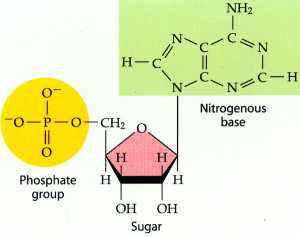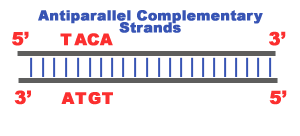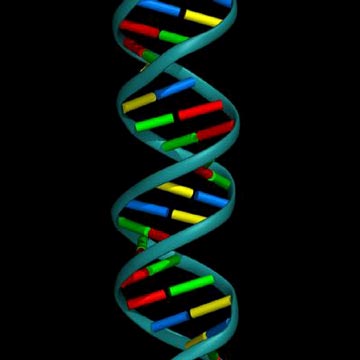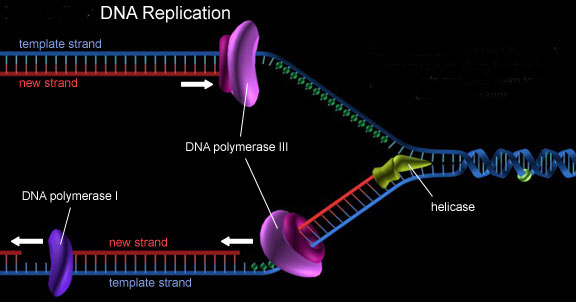Tuesday, February 15, 2011
|
|
How a DNA Test Is Done
For a DNA test, a person usually gives a blood sample; DNA is then taken out of some of the white blood cells. For some DNA tests, a swab of the inside of the cheek may be done, as the DNA can be taken out of the cheek cells. Once the DNA is separated out, scientists hunt for genes along the DNA strand. This type of specialized testing is only done by certain genetic testing laboratories. Usually, DNA test samples are taken by a doctor or clinic and sent away to one of these laboratories. It takes a week or more for results to come back.Why a DNA Test Is Done
There are several uses for a DNA test:- testing: Scientists look for a change (mutation) in a particular gene. DNA testing might also be able to identify any family members who have, or are at risk for, developing the genetic disorder.
- Carrier testing: This is to identify family members who have genes that indicate they are at risk for passing on a genetic disorder to their children; these individuals do not have symptoms of the genetic disorder themselves.
Pakistan’s First DNA Forensic Lab Launched
 |
| Charles Darwin |
El 12 de febrer es cel·lebra el Dia de Darwin, que va nèixer a Anglaterra ara fa 202 anys. A Internet,amb motiu d'aquest aniversari, podem trobar múltiples imatges i dibuixos relacionats amb la seva teoria de l'evolució.
En aquest bloc adn-dna podem consultar diferents posts sobre Charles Darwin.
En aquest bloc adn-dna podem consultar diferents posts sobre Charles Darwin.
Adjunto en la part inferior una imatge representativa (© 2011 El PaleoFreak) sobre l'actualització de la teoria de Darwin amb els nous coneixements de genètica.
En el següent vídeo s'explica la seva teoria de l'evolució.
Genetic fingerprinting and beyond
DNA fingerprinting, accidentally invented in 1984, has revolutionised many areas of biology, most notably forensic and legal medicine. Professor Jeffreys will describe how DNA typing can be used to solve casework and will review the latest developments, including the creation of major national DNA databases that are proving extraordinarily effective in the fight against crime. He will also discuss how this work led to the discovery of some of the most unstable regions of human DNA, and how these in turn have opened the way to exploring the fundamental processes of mutation and recombination that generate all human DNA diversity.
Professor Alec Jeffreys FRS studied biochemistry and genetics at Merton College, Oxford. He moved in 1977 to the Department of Genetics at the University of Leicester where he currently holds the positions of Professor of Genetics and Royal Society Wolfson Research Professor. Professor Jeffrey's research at Leicester has focussed on exploring human DNA variation and the mutation processes that create this diversity. He was one of the first to discover inherited variation in human DNA, then went on to invent DNA fingerprinting, showing how it could be used to resolve issues of identity and kinship. His current work concentrates on developing new approaches to analysing variation and mutation in human chromosomes.
Professor Alec Jeffreys FRS studied biochemistry and genetics at Merton College, Oxford. He moved in 1977 to the Department of Genetics at the University of Leicester where he currently holds the positions of Professor of Genetics and Royal Society Wolfson Research Professor. Professor Jeffrey's research at Leicester has focussed on exploring human DNA variation and the mutation processes that create this diversity. He was one of the first to discover inherited variation in human DNA, then went on to invent DNA fingerprinting, showing how it could be used to resolve issues of identity and kinship. His current work concentrates on developing new approaches to analysing variation and mutation in human chromosomes.
Fighting Sexual Violence with DNA
DNA Evidence

RAINN's Support for Legislation to Expand DNA Databases
The ability of the DNA database to identify criminals is directly related to the size of "CODIS," which is the FBI's name for the national database that includes DNA collected from criminals in every state by local and state law enforcement. As the database has grown to include DNA from 4.2 million convicted criminals, the "hit rate" (percentage of cases in which DNA found at the crime scene can be matched to that of a criminal in the database), has gone up dramatically.
States that have eliminated their casework backlog and expanded collection of DNA are leading the country in the use of DNA evidence. Once all states move to collecting DNA from all felony arrestees, it is estimated that the hit rate will increase to more than 40% nationally. In other words, out of every 10 cases in which the police have no suspect but do have DNA from the crime scene, at least four cases will be solved by searching for matching DNA in the criminal database.
The DNA Fingerprint Act of 2005
RAINN supported enactment of the federal DNA Fingerprint Act of 2005, a measure that makes it easier to include and keep the DNA profiles of criminal arrestees in CODIS (where such profiles can be compared to crime scene evidence). By lifting legal barriers to maintaining DNA data from criminal arrestees, this act will make it easier for state and federal law enforcement officials to catch rapists, murderers, and other violentcriminals. The measure became law in 2006 as part of the reauthorization of
the
RAINN's Support for The Justice for All Act of 2004
RAINN worked closely with the Bush Administration, members of Congress of both parties, and other organizations on the development of DNA backlog elimination legislation. RAINN's president testified before Congress about the backlog of untested DNA samples. RAINN also advocated for the Act's passage, with the involvement of our grassroots base of 1,100 local affiliates, allied organizations, and volunteers across the nation.This two-year effort was a great success: landmark legislation, known as thewas passed by Congress and signed into law by President Bush. This new law, which is considered the most important anti-rape legislation ever considered by Congress, will lead to solving as many as 57,000 open rape cases. By taking thousands of rapists off the streets, it will likely prevent tens of thousands of future rapes.
Among its major provisions, this 2004 measure:
- Creates the Debbie Smith DNA Backlog Grant Program and authorizes $755 million over five years for grants to states and local authorities to eliminate the backlog of untested rape evidence kits.
- Expands the criteria for inclusion of DNA profiles in the national DNA database, and provides funding to analyze the backlog of DNA samples from convicted criminals.
- Provides grants for training law enforcement, judges and medical personnel on the use of DNA analysis in sexual assault cases.
- Provides funding to expand local and state witness assistance programs and crime victim notification programs, and extends enhanced rights to crime victims.
- Authorizes grants to state sexual assault coalitions for programs under the Violence Against Women Act and expands VAWA to provide legal assistance for victims of dating violence.
Inside the Living Cell
All living organisms are made up of cells. Just as a brick is the basic unit of structure of a house, a cell is the basic unit of structure of all living things. All organisms consist of one or more cells.
New cells can be formed only by the division of existing cells. A plant or animal starts as a single cell and grows by increasing the number of cells. The human body contains approximately 100 trillion cells, most of which are less than a tenth of a millimeter across.
An organism acquires energy by breaking down food within its cells. It then uses this energy to maintain each cell's internal chemical environment, to build organic molecules, to grow, and to reproduce by cell division.
Most cells (excluding bacteria) have three main parts:
1. The cell membrane is a thin but tough covering made of lipids and proteins that forms the outside of the bag. The cell membrane protects the inner contents of the cell, gives the cell shape and supports and controls what goes in and out of the cell.
2. The cytoplasm (means cell substance) contains water, various salts, and many large macromolecules. The cytoplasm also contains a variety of smaller subunits or compartments of the cell called organelles which perform various tasks.
3. The cell nucleus houses the cell’s genetic material (DNA and RNA) and proteins. The genetic material contains directions for making the cell’s proteins.
Of particular interest to the molecular genealogist, are the cell nucleus and one of the smaller organelles found in the cytoplasm, the mitochondria.

Fig. 1
Fig. 1 adapated from the National Human Genome Glossary:Some Very Basic Chemistry What is a macromolecule?
All matter is made of small particles called atoms. Atoms are far too small to be seen with the naked eye or even with a microscope. In fact, more than a trillion atoms could fit over the period at the end of a sentence. There are about 90 different kinds of atoms found in nature. Matter made up of all one kind of atom is called an element.
Clearly, however, there are more than 90 different kinds of matter in our world. This is because atoms can combine in chemical reactions to produce a myriad of new substances. For example, when one atom of sodium (which by itself is a soft metal) and one atom of chlorine (which by itself is a poison green gas) combine, the result is a compound called sodium chloride, more commonly known as table salt. A compound is made up of two or more elements that are chemically bonded.
| Some Familiar Elements and Their Symbols | |||||
| Element | Symbol | Element | Symbol | Element | Symbol |
| Hydrogen | H | Phosphorous | P | Chlorine | Cl |
| Oxygen | O | Sulfur | S | Sodium | Na |
| Carbon | C | Magnesium | Mg | Gold | Au |
| Nitrogen | N | Silicon | Si | Tin | Sn |
Clearly, however, there are more than 90 different kinds of matter in our world. This is because atoms can combine in chemical reactions to produce a myriad of new substances. For example, when one atom of sodium (which by itself is a soft metal) and one atom of chlorine (which by itself is a poison green gas) combine, the result is a compound called sodium chloride, more commonly known as table salt. A compound is made up of two or more elements that are chemically bonded.
 |  |  | |  |
| Na sodium | | Cl chlorine | | NaCl table salt |
A molecule is the smallest particle of a compound that has all the properties of that compound. We write the molecular formula of salt as NaCl to indicate it has one atom of sodium and one atom of chlorine.
Since you may not wish to explore the complexities of chemical bonding as part of your genealogical research, you might find it useful to compare atoms to a variety of differently sized and shaped lego building blocks which can be fitted together in a variety of ways to form a multitude of different creations. Similarly, the atoms of each element are distinguished by their mass and by the number of connections they can make with other atoms. There is virtually an infinite variety of compounds possible.
Some molecules are small, such as water, H2O, which has only three atoms and table salt NaCl which has two. Others are larger such as a molecule of table sugar, C12H22O11 (sucrose) which has 45 atoms. Still other molecules, such as proteins, are gigantic, sometimes containing tens of thousands of atoms. These gigantic molecules are called macromolecules.
Some molecules are small, such as water, H2O, which has only three atoms and table salt NaCl which has two. Others are larger such as a molecule of table sugar, C12H22O11 (sucrose) which has 45 atoms. Still other molecules, such as proteins, are gigantic, sometimes containing tens of thousands of atoms. These gigantic molecules are called macromolecules.
Steps of DNA Replication
The next we have to do is to shed light into the mystery of the steps of DNA Replicationof the Eykaryotes.1)The first major step for the DNA Replication to take place is the breaking of hydrogen bonds between bases of the two antiparallel strands. The unwounding of the two strands is the starting point. The splitting happens in places of the chains which are rich in A-T. That is because there are only two bonds between Adenine and Thymine (there are three hydrogen bonds between Cytosine and Guanine). Helicase is the enzyme that splits the two strands. The initiation point where the splitting starts is called "origin of replication".The structure that is created is known as "Replication Fork".

2) One of the most important steps of DNA Replication is the binding of RNA Primase in the the initiation point of the 3'-5' parent chain. RNA Primase can attract RNA nucleotides which bind to the DNA nucleotides of the 3'-5' strand due to the hydrogen bonds between the bases. RNA nucleotides are the primers (starters) for the binding of DNA nucleotides.

2) One of the most important steps of DNA Replication is the binding of RNA Primase in the the initiation point of the 3'-5' parent chain. RNA Primase can attract RNA nucleotides which bind to the DNA nucleotides of the 3'-5' strand due to the hydrogen bonds between the bases. RNA nucleotides are the primers (starters) for the binding of DNA nucleotides.

3) The elongation process is different for the 5'-3' and 3'-5' template. a)5'-3' Template: The 3'-5' proceeding daughter strand -that uses a 5'-3' template- is called leading strand because DNA Polymerase ä can "read" the template and continuously adds nucleotides (complementary to the nucleotides of the template, for example Adenine opposite to Thymine etc).

b)3'-5'Template: The 3'-5' template cannot be "read" by DNA Polymerase ä. The replication of this template is complicated and the new strand is called lagging strand. In the lagging strand the RNA Primase adds more RNA Primers. DNA polymerase å reads the template and lengthens the bursts. The gap between two RNA primers is called "Okazaki Fragments".
The RNA Primers are necessary for DNA Polymerase å to bind Nucleotides to the 3' end of them. The daughter strand is elongated with the binding of more DNA nucleotides.

4) In the lagging strand the DNA Pol I -exonuclease- reads the fragments and removes the RNA Primers. The gaps are closed with the action of DNA Polymerase (adds complementary nucleotides to the gaps) and DNA Ligase (adds phosphate in the remaining gaps of the phosphate - sugar backbone).
Each new double helix is consisted of one old and one new chain. This is what we call semiconservative replication.

5) The last step of DNA Replication is the Termination. This process happens when the DNA Polymerase reaches to an end of the strands. We can easily understand that in the last section of the lagging strand, when the RNA primer is removed, it is not possible for the DNA Polymerase to seal the gap (because there is no primer). So, the end of the parental strand where the last primer binds isn't replicated. These ends of linear (chromosomal) DNA consists of noncoding DNA that contains repeat sequences and are called telomeres. As a result, a part of the telomere is removed in every cycle of DNA Replication.
6) The DNA Replication is not completed before a mechanism of repair fixes possible errors caused during the replication. Enzymes like nucleases remove the wrong nucleotides and the DNA Polymerase fills the gaps.

Similar processes also happen during the steps of DNA Replication of prokaryotes though there are some differences.
DNA Double Helix
Lets have a look in how the DNA Double Helix (two DNA strands) looks like. Every DNA strand is consisted of nucleotides. Nucleotides are monomers that are made of a phosphate, a sugar (deoxyribose) and a heterocyclic base (Thimine, Cytosine -pyrimidines- Adenine, Guanine - purines-). The combination of a sugar and an heterocyclic base gives a nucleoside. When a phosphate is added to the molecule, a nucleotide is created.
The backbone of each strand consists of alternating phosphates and deoxyriboses. To be more specific, the phosphate of a nucleotide bonds both to the 5' carbon of one deoxyribose and the 3' carbon of the next deoxyribose. This is how the nucleotides create the strand. The 5' and 3' refers to the place of the carbons in the deoxyribose molecule. The heterocyclic bases which are attached to the deoxyriboses project in towards the axis of the helix.
The two polynucleotide strands wound around each other. The strands of a DNA double Helix are antiparallel which means that the one chain runs 5'-3' and the other runs 3'- 5'. The connections of the two strands are due to the hydrogen bonds between the nucleotide bases of the two strands. Connections happen between the adenines and thymines (2 hydrogen bonds) and between cytosines and guanines (3 hydrogen bonds). The two strands are complementary, which means that the strand running in the 5'A 3' direction will have base Adenine that will pair with base Thymine on the opposite strand running in 3'A 5' direction. Since the strands are complementary and antiparallel, each of them can be a matrix for the creation of a new complementary and antiparallel strand, as we can see in another chapter of this site.

The DNA Double Helix makes a complete turn in over 10 nucleotide pairs, so each turn takes 35.7 ?. About 25 hydrogen bonds are created in this complete turn. The power of these 25 bonds is equal to 1 covalent bond (bond between carbon and oxygen). The diameter of a DNA Double Helix is 20 ?. The length of the helix can be 2 cm (!!) if the helix is fully stretched.

The hydrogen bonds and the bonds between deoxyribose and phosphates are the main (but not only) chemical forces that create a DNA Double helix (pic.2).
DNA Replication models
The process of DNA Replication was hiding many secrets. One of the most important was how the two daughter strands are created. As we have noticed in previous chapters of our site the Dna is a complex of two chains! In order the hereditary phenomenon to be explained, these strands should be accurately copied and transmitted from the parental cell to the daughter ones. These are three possible models that describe the accurate creation of the daughter1) Semiconservative Replication According to this model, DNA Replication would create two molecules. Each of them would be a complex of an old (parental and a daughter strand).
2) Conservative Replication According to this model, the DNA Replication process would create a brand new DNA double helix made of two daughter strands while the parental chains would stay together.
3) Dispersive Replication According to this model the Replication Process would create two DNA double-chains, each of them with parts of both parent and daughter molecules.
As we will see at the next chapter, the correct model is the first. Semiconservative DNA Replication was proved by the experiment of Meselson - Stahl.
DNA Replication
Every cell (of eukaryotes or prokaryotes) has one or more DNA (or RNA) polymer molecules that need to duplicate in order the cell duplication to take place. This is what DNA Replication -aka DNA Synthesis- succeeds.

In the eukaryotes (organisms with cell that have nucleus) the DNA is formed in two strands, each composed of units called Nucleotides. The two strands look like two chains that form the DNA Double Helix. The DNA Replication Process is capable of opening the Double Helix and separating the two strands. Then the two strands are copied. As a result two new DNA molecules are created. The next step is the cell division. After that a daughter cell is created. In its nucleus lies a copy of the parental DNA.
Follow the links in the left menu in order to find more info about the DNA Replication Process.

In the eukaryotes (organisms with cell that have nucleus) the DNA is formed in two strands, each composed of units called Nucleotides. The two strands look like two chains that form the DNA Double Helix. The DNA Replication Process is capable of opening the Double Helix and separating the two strands. Then the two strands are copied. As a result two new DNA molecules are created. The next step is the cell division. After that a daughter cell is created. In its nucleus lies a copy of the parental DNA.
Follow the links in the left menu in order to find more info about the DNA Replication Process.
Subscribe to:
Comments (Atom)



